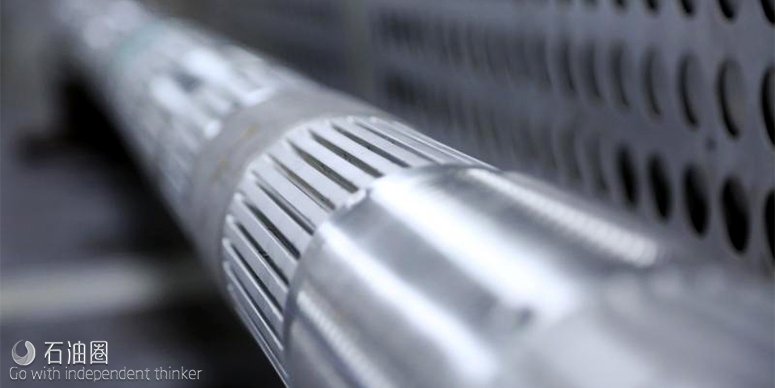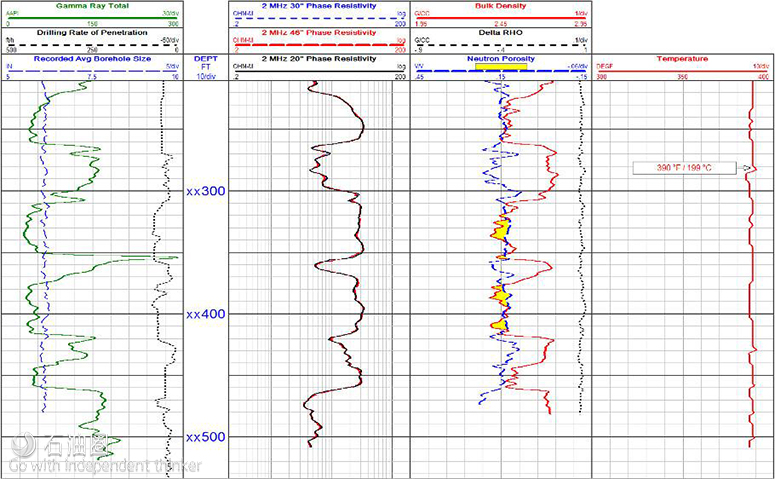Extreme Environment LWD System Saves Millions In Rig Time
Each HEX service component—from electronics to elastomers—is optimized for reliability and robust resistance to ultrahigh temperatures, high pressures and vibration. (Source: Weatherford)
Too often when drilling in high-temperature offshore fields, traditional LWD tools experience failures. As a result, operators might employ extensive temperature- mitigation measures, incur additional operating time and expense or face the prospect of receiving no data at all. A new technology from Weatherford combats this problem by enabling reliable formation data acquisition while drilling in hostile environments.
Working with a major E&P company drilling an offshore development field in the Gulf of Thailand, Weatherford designed an ultrahigh-temperature LWD service. After two rounds of development, the HeatWave Extreme (HEX) service was released to the market at the 2017 Offshore Technology Conference in May. The service provides comprehensive real-time and recorded data—including gamma ray, resistivity, neutron porosity, density, and bore and annular pressure data—at temperatures up to 200 C (392 F).
Case study
The bounds of HP/HT drilling have quickly evolved. In 2011 the maximum downhole temperature encountered was 182 C (360 F). Four years later the maximum temperature jumped to 213 C (415 F) and has climbed each year since.
Operators face high-risk options to maintain drilling parameters and acquire reliable openhole logging data in these wells. One option is to drill ahead and forgo wellbore positioning, which incurs the cost of a wireline run for petrophysical data. Another option is to use temperature mitigation techniques, which reduces the ROP and increases costs. A third option is to abandon a potentially producing reservoir.
The Gulf of Thailand is home to many of the current records for extreme downhole temperatures. Driven by the need for reliable real-time petrophysical data in ultrahigh temperature wells, a major E&P company sought a service company partner to develop new technology. In 2006 Weatherford designed the hostile environmental logging (HEL) system, which was the first LWD system capable of logging in temperatures up to 175 C (347 F).
Building off the capabilities of existing Weatherford LWD technologies, including the HEL system, each component of the HEX service—from electronics to elastomers—was completely redesigned for optimal reliability while withstanding ultrahigh temperatures and vibration. The development team split the project into two phases.
Phase 1 development
In Phase 1 the team developed a 4¾-in. MWD system that uses pressure-modulated mud pulse telemetry to transmit surveys and toolface values in extreme temperatures. The system includes a directional measurement sensor that uses orthogonally mounted triaxial accelerometers and magnetometers to provide rotating inclination and azimuth.
For bore and annular pressure measurements quartz transducers provide data that determine equivalent circulating density (ECD). These sensors also transmit pump-off minimum and maximum ECD data during connections, which can be critical in wells with tight pore pressure/fracture gradient windows. They also can transmit downhole computed differential pressure measurements that are calculated from simultaneously acquired samples, which eliminates the need for surface computation. Radially mounted Geiger- Müeller tubes obtain real-time and recorded gamma ray data.
To improve the reliability of neutron porosity measurements in high-temperature environments, the team devised radially mounted helium-3 tubes that measure the reaction between matrix and pore fluids and emit neutrons to determine formation porosity.
Phase 1 culminated with a complete gamma ray service, enabling the operator to correlate reservoir models, measure shale volumes and determine well placement in the extreme environments.
The HEX service was jointly designed and field-proven with a major E&P company in the Gulf of Thailand. (Source: Weatherford)
Resistivity and density systems
In Phase 2 the development team created a fully compensated dual-frequency resistivity tool. The tool features two centrally mounted receiver antennae with three transmitters both above and below each antenna at 20-in., 30-in. and 46-in. spacing. Operating at 2 MHz and 400 KHz, the tool provides a range of curves with differing depths of investigation and vertical resolution.
The team upgraded the neutron porosity insert to include density measurements. The density tool features scintillation detectors that measure gamma ray scatter from a chemical source mounted in the collar. The density detector comprises a near- and far-measurement system that includes tungsten shielding to ensure that gamma rays are emitted only into the formation. The resistivity service enables operators to determine hydrocarbons in place, calculate water saturation and evaluate pore pressure. The neutron-density service determines water saturation, lithology and porosity.
This phase of development also included a new preventive maintenance program that tracks temperature and vibration rates and adjusts maintenance schedules accordingly. The result is an LWD string that can acquire LWD data during 200 hours of operation at 200 C and survive four hours at 210 C (410 F) without temperature mitigation, dramatically reducing nonproductive time (NPT) and the overall cost of drilling in ultraHP/HT environments.
At the close of Phase 2 a complete extreme environment triple-combo LWD system was ready for the field. The engineering team also designed an additional tool size of 6¾-in. during Phase 2 that enables high-temperature LWD in holes with diameters from 6 in. to 8½ in.
Offshore development campaign
The LWD system logged several wells as part of an extensive offshore HP/HT drilling campaign in the Gulf of Thailand. The system proved a reliable means of acquiring gamma ray, resistivity, neutron porosity, bore and annular pressure, and density data at temperatures up to 200 C.
The high-temperature-rated sensors in the HEX assembly operated for 2,932 hours and drilled 74,906 m (245,754 ft), including 947 hours in which temperatures exceeded 175 C. The team completed the 37-well drilling campaign with zero tool failures, zero blind runs, zero safety incidents and less than 1% NPT.
The drilling team reached total depth in each well without temperature mitigation efforts such as reducing rpm, controlling the ROP or circulating to cool the bottomhole assembly. The technology reduced drilling time by 28% overall or 20 hours per well, which is valued at $150,000 per well and $6.9 million during the campaign.
Weatherford has created a triple-combo LWD system that delivers dependable, high-quality reservoir characterization data; locates formation pay zones; and enables on-the-fly drilling adjustments in the world’s hottest wells. The HEX LWD service not only provides reliable LWD data in HP/HT wells, it also eliminates the need for extra trips or temperature mitigation.

 石油圈
石油圈


